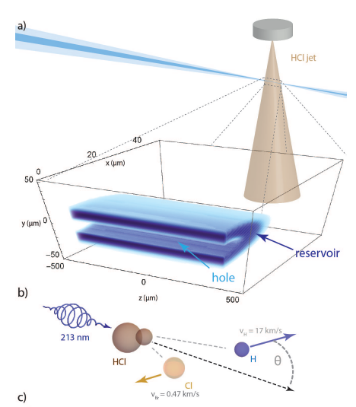Supervisors: T. Peter Rakitzis (University of Crete and IESL-FORTH) & Jenny List (DESY)
FORTH and DESY are premier research institutions of Greece and Germany, respectively, which focus on investigating the structure and function of matter, from the smallest particles of the universe to the building blocks of life. In this way, they contribute to solving the major questions and urgent challenges facing science, society and industry.
Plasma accelerators are poised to trigger a revolution in accelerator science. DESY is committed to exploiting the full potential of this cutting-edge technology developing state-of-the-art plasma accelerators for a range of demanding research applications: from compact FEL drivers to energy-efficient synchrotron injectors; from linac energy boosters to plasma-based colliders. DESY also develops the plasma accelerator technology for a wide range of medical and industrial applications. Experimental facilities include the state-of-the-art laser driver KALDERA, the advanced beam-driven facility FLASHForward, and a host of ancillary research and development laboratories. The theory and simulation team of the plasma acceleration group at DESY develops and harnesses simulation tools to help understand experiments, propose novel concepts and investigate new mechanisms, key ingredients for plasma-based acceleration research.
However, the control of the electron spin polarization in plasma accelerators has not yet been achieved, as typical atomic/molecular targets have unpolarized electrons. In recent years, researchers at IESL-FORTH have developed spin-polarized hydrogen (SPH) atom targets, at densities sufficient for laser plasma acceleration, from the photodissociation of HCl molecular beam expansions using circularly polarized light near 200 nm. However, the presence of the halide cofragment will reduce the polarization of the produced electrons. Very recent work proposes geometric methods to separate spatially the SPH from the halide atoms, so that the SPH can be used as a target for the production of spin-polarized beams form laser-plasma acceleration. The student will help develop the SPH target at FORTH, and then transfer this target to DESY for laser-plasma acceleration experiments.
Expected Results
- Simulated molecular-beam expansion and photodissociation for polarized molecular target
- Production of isolated spin-polarized hydrogen atoms at FORTH
- Transfer of SPH target to DESY for laser-plasma acceleration experiments
Planned secondments
- 2 months at UIo (year 1): design of spin-polarized hydrogen source
- 1 month at FZJ (year 2): training in polarized nuclear fusion experiments and hyperpolarizing atoms and small molecules
- 3 months at DESY (year 2): transfer of spin-polarized H atom source
- 4 months at DESY (year 3): development of laser-acceleration of spin-polarized electrons

